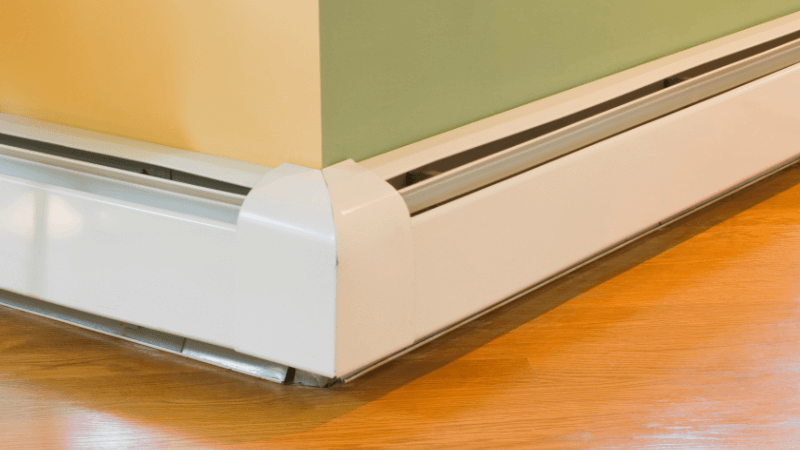A hydronic baseboard heater is a radiant heating solution that is arguably better than a standard convection home heating system. It is low-maintenance, quiet, safe for kids and pets, and great if you struggle with seasonal allergies. This guide covers the different types of hydronic baseboard heaters and their pros and cons.
How A Hydronic Baseboard Heater Works
Hydronic baseboard heaters use hot water to supply consistent heating throughout your house. They have four main components: a boiler, a pump, pipes, and the baseboard units comprising the radiator and thermostat.
Because of convection currents, warm air rises from the heating unit, eliminating the need for a fan to distribute the heat throughout your space. And since a hydronic baseboard heater warms a liquid instead of heating the air directly, your room stays warmer for longer after shutoff. This means that a hydronic baseboard heater operates silently and saves your energy bills.
Types of Hydronic Baseboard Heaters
Classic or Traditional Baseboard Heaters
Pros: Easier and cheaper to install and maintain
Cons: May look “clunky” or outdated
A classic hydronic baseboard heater has a white metal housing that covers the heating element. It’s the easiest type of heater to install, and the robust design is built to withstand wear and tear. However, the classic baseboard heater is quite visible and might not match your room’s decor. Choose this type if aesthetic is a little lower on your heating priorities list.
Low-Profile Hydronic Baseboard Heaters
Pros: Blends into most baseboard types and designs
Cons: More expensive than classic baseboard heaters
Sleek and understated, a low-profile hydronic baseboard heater is designed to blend seamlessly into your room. You may find this type of heater marketed as “slimline,” “minimalistic,” or “ultramodern”. Low-profile hydronic baseboard heaters are typically available in white to match your trim and molding.
Fully Customized Hydronic Baseboard Heaters
Pros: Versatile designs and smart features
Cons: High price point for the same basic mechanism
While the internal mechanism remains the same, a fully customized hydronic baseboard heater can either blend in or become a focal point in your space. Most customized designs feature covers made from cast iron or stainless steel, and in numerous colors and styles, too.
You can also find additional features in these types of heaters, including integrated smart interfaces and digital controls. However, hydronic baseboard heaters work in basically the same way, so decide if the extra customization cost is worth it.
How to Choose a Hydronic Baseboard Heater
As you shop around for hydronic baseboard heaters, consider the following factors:
- Size: These systems come in 35-inch and 94-inch lengths, which is more limited compared to convection baseboard heaters.
- Price: Hydronic baseboard heaters typically cost three or four times more than convection heaters of the same size.
- Maintenance: Convection heaters are much easier to DIY if they break down, but hydronic baseboard heaters need a heating expert for repairs in case of issues.
- Durability: Convection heaters are known to last for 20+ years with proper maintenance. Hydronic baseboard heaters may need replacement every 10 years or so.

